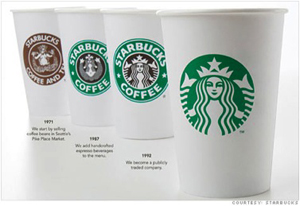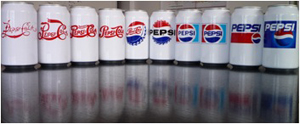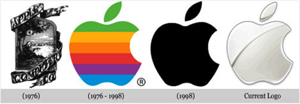A Relevant and Refreshing Conversation with Your Customers
Understanding the importance of remaining different and exciting, some of the most iconic brands have been known to refresh their image. Most recently, Wendy’s has replaced their logo and tagline for the first time since 1983 in an effort to reposition the brand and venture into a broader arena of quick service offerings. Craig Bahner, the company’s chief marketing officer, indicated, “It’s a tangible signal of change.” Wendy’s original logo was inspired by founder Dave Thomas’ daughter, Melinda Lou, often pronounced “Wenda” by her younger siblings (as they couldn’t pronounce her name properly when they were younger). Wenda later turned into Wendy. Bahner noted that in the new logo, Wendy’s pigtails peek out, making her more dynamic and reflective of the “enhanced dimensions of the Wendy’s experience.” Part of this experience includes the company’s plan to introduce whole wheat buns, flatbreads and more tailored-looking uniforms for their employees.

Last year, as part of their 40th anniversary, Seattle-based Starbucks refreshed their famous logo. This change marked the company’s milestone year and the next chapter in their history. According to Starbucks President and CEO, Howard Shultz, “Now we’ve given her a small but meaningful update to ensure that the Starbucks brand continues to embrace our heritage and also ensure we remain relevant and poised for future growth.”

No matter what case study you examine, the common theme is to stay relevant. The best logos are not only memorable and recognizable—they speak to the consumer. They tell a compelling story about the brand and what the company is about. Being relevant and staying true to the brand don’t have to be mutually exclusive. Wendy’s preserved three important things in their rebranding process: the image of the little girl, the color red and the way the “Wendy’s” font swerves up like a wave. Still an eight-year-old girl in a blue and white striped dress, the new Wendy still embodies founder Dave Thomas’ dream of a wholesome hamburger restaurant.


A company’s brand represents the cumulative history of the relationships the company has maintained and the integrity of said relationships. But more important than positioning for consumers, your brand provides an insight into the future of your business. Knowing that “Wendy’s goal is to be a five-star restaurant at a three-star price,” and ultimately, “a top-end fast-food chain with better quality than McDonald’s, but not at the same level as Panera” played a huge factor in their rebranding and is vital in remaining true to the core of the company.

As you can see, the best brands first start with an idea. From this idea they build a foundation of goals and values that should remain constant with the brand. This foundation will help act as a guide when “refreshing” your brand. As you evolve to stay relevant, it’s always important to ask, “Does this change stay true to our brand’s core values?”
By partnering with a creative firm, it’s easier to find a balance between relevant and true, making your brand evolution both purposeful and successful.






